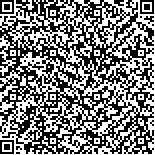| This article has been:Browse 45Times Download 46Times |

scan it! |
|
|
| DOI:10.13522/j.cnki.ggps. 2023382 |
|
| Investigation and Cause Analysis of Freezing Damage in the Main Water Conveyance Lining Channel in Ningxia Seasonal Freezing Area |
|
JIANG Jiali, LU Liguo, ZHU Jie, NIU Jiayong
|
|
Water Conservancy Research Institute of Ningxia Hui Autonomous Region, Yinchuan 750021, China
|
| Abstract: |
| 【Objective】 The purpose of this paper is to summarize the current situation of frost damage in Ningxia's backbone water transmission lining channels and analyze the main reasons for the frequent occurrence of channel frost damage problems, 【Method】 On the basis of in-depth research on the backbone channels of Ningxia Yellow Diversion Irrigation Area, the current situation and characteristics of frost damage were summarized, and the impact of different influencing factors on the degree of frost damage was quantitatively analyzed. 【Result】 The trapezoidal section mainly experienced misalignment, overall detachment, collapse and cracking. The trapezoidal section at the bottom of the arc mainly experienced cracking at the slope toe and at the bottom of the channel, as well as misalignment. The trapezoidal section at the curved slope toe mainly experienced cracking at the slope toe and arching failure. The maximum freeze-thaw depth at different positions of the channel increased with the increase of groundwater level burial depth. The sensitivity order of the influence of groundwater level burial depth on the maximum freeze-thaw depth was: channel top>1/2 channel slope>channel bottom. The average ground freezing depth in each month showed that shady slopes > canal bottoms > sunny slopes. The freezing rate was the greatest on the shady slopes, and varies on the sunny slopes and the bottom of the channels. The freezing depth of the East-West trending shady slope varied from 1.3 to 2.4 times of the sunny slope, with the highest freezing depth at the bottom of the channel and the second highest at the shady slope toe. The freezing depth at the North-South slope toe varied from 1.1 to 2.0 times that of the sunny slope, with the lowest freezing depth at the bottom of the channel. The influence of different structural types on the uneven degree of frost heave: trapezoidal > curved slope toe trapezoidal > curved bottom trapezoidal channel. 【Conclusion】 To solve the serious frost heave failure of the backbone channels in Ningxia Yellow Diversion Irrigation Area, it is still necessary to start from cracking the outstanding problems such as severe frost heave at the bottom of the channel, the impact of high groundwater levels, and the improvement of concrete material performance. We need to carry out research on structural optimization of permeable lining in line with the actual characteristics of the region, research on the interaction mechanism of concrete drying and wetting, freezing and thawing, and salinization, and research on the improvement of concrete strength and anti-aging performance. We need to establish a practical mechanical analysis model, standardize the reasonable joint positions of concrete lining plates, and further clarify the impact of filling material selection on the deformation law of the lining. |
| Key words: Ningxia seasonally frozen areas; backbone channels; channel freezing damage; influencing factor |
|
|